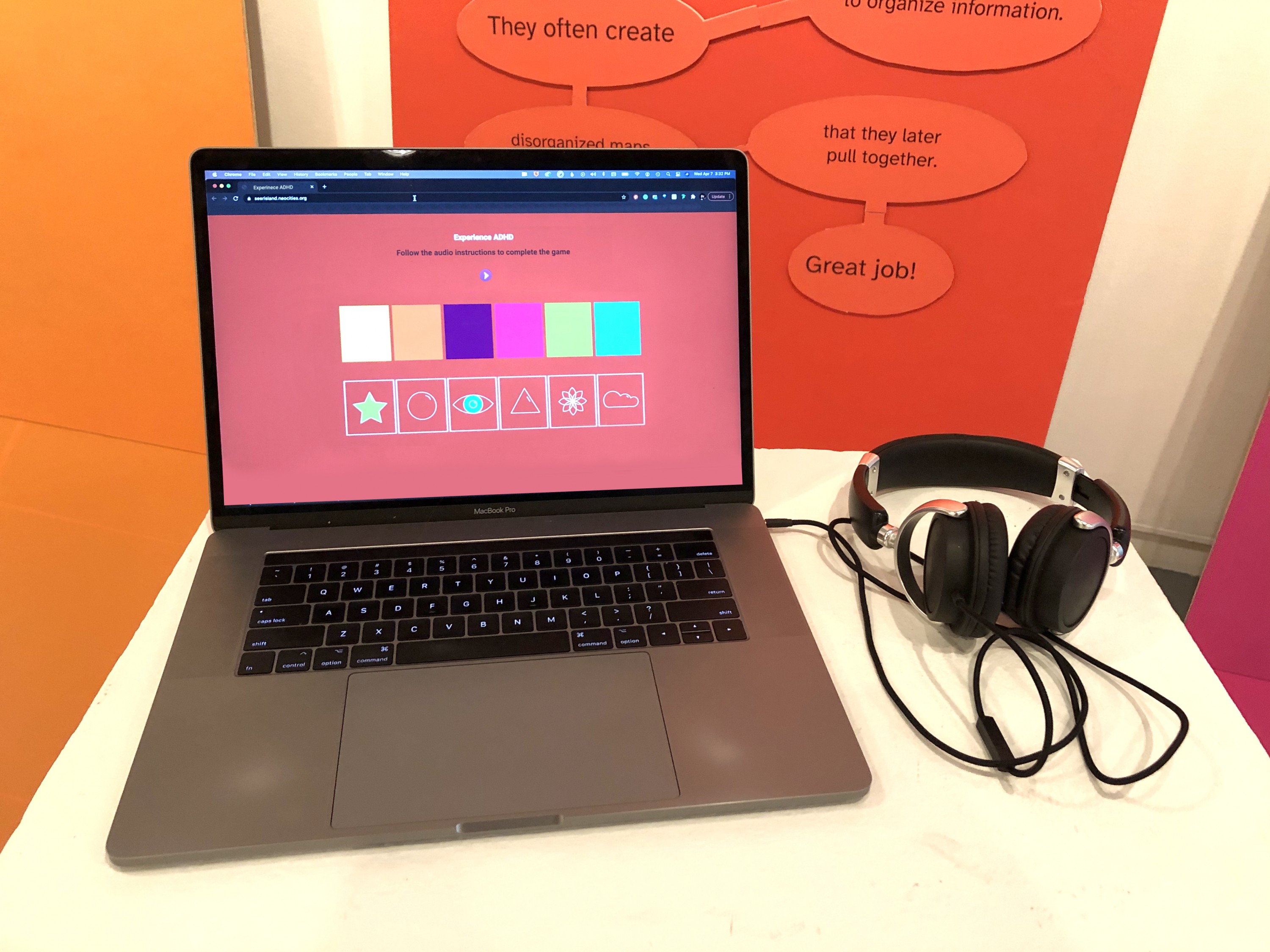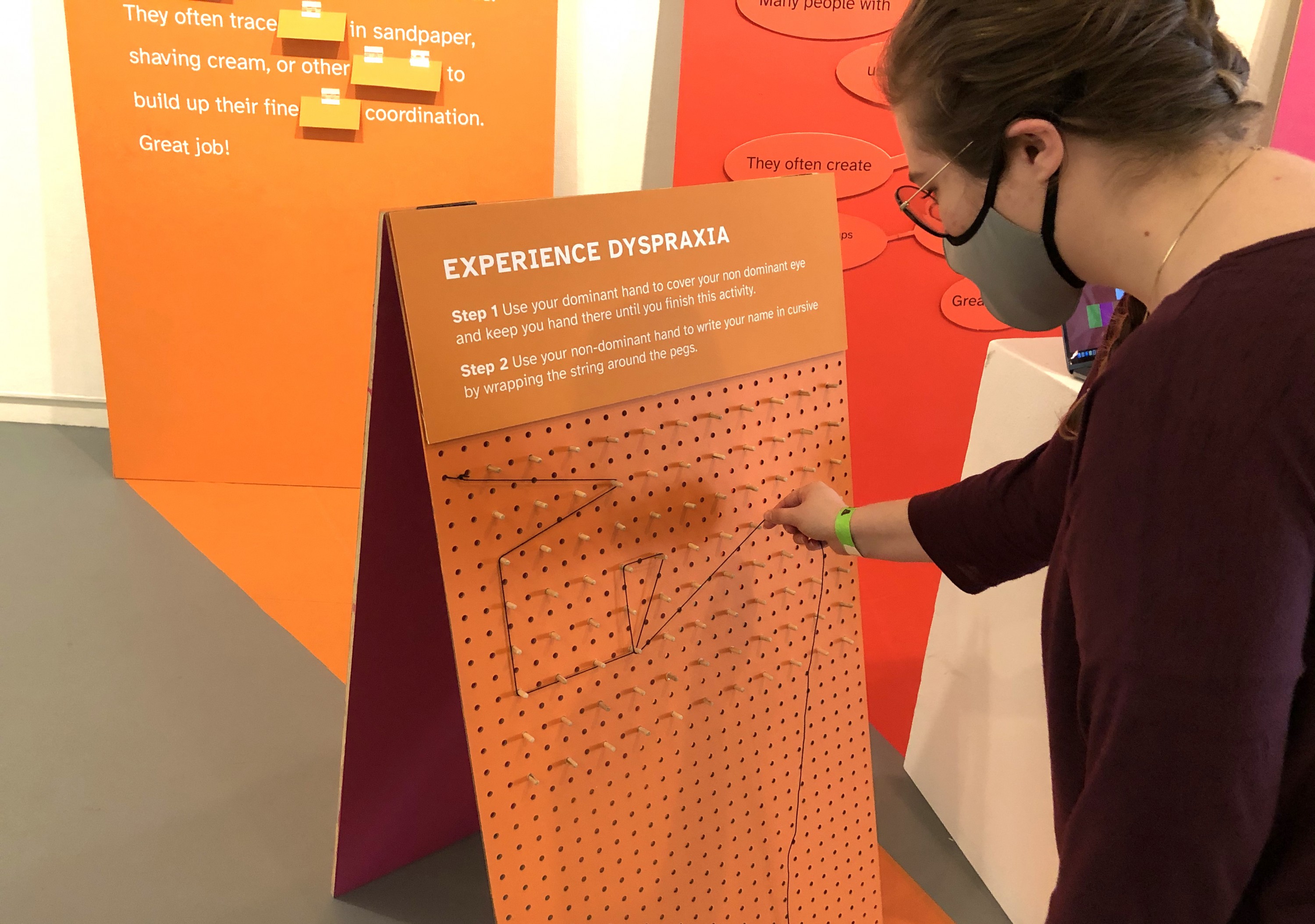Ana Tobin
Statement
What does it feel like to have a learning disability or disorder? Neuro Divergent uses experiential graphic design to promote empathy for and awareness of learning disabilities and disorders. It does this through a series of simulations that allow participants to experience what it feels like to have a learning difference and use the unique methods of learning used by people who have learning differences. In each of the four experiences, participants also learn about someone who struggles with a particular learning disability and is successful in their chosen field. Participants thus learn about each disability or disorder and discover neuro divergent gifts.
Try the ADHD simulation out at: https://adhdsim.neocities.org/
Graphic Design (MFA) Students
It doesn't look like you have any bookmarked favorites. Customize this list by using the bookmark add/remove button throughout the site.












